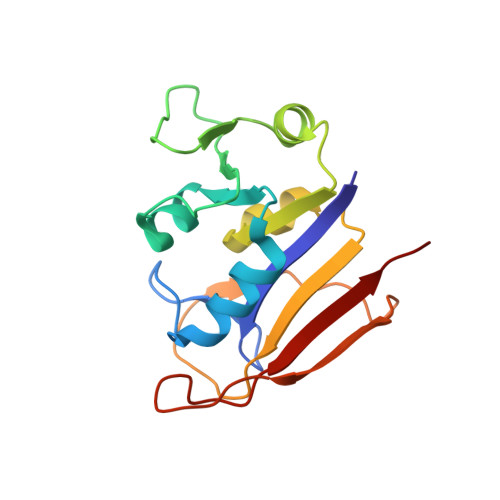Crystal structure of the anthrax drug target, Bacillus anthracis dihydrofolate reductase.
Bennett, B.C., Xu, H., Simmerman, R.F., Lee, R.E., Dealwis, C.G.(2007) J Med Chem 50: 4374-4381
- PubMed: 17696333
- DOI: https://doi.org/10.1021/jm070319v
- Primary Citation of Related Structures:
2QK8 - PubMed Abstract:
Spores of Bacillus anthracis are the infectious agent of anthrax. Current antibiotic treatments are limited due to resistance and patient age restrictions; thus, additional targets for therapeutic intervention are needed. One possible candidate is dihydrofolate reductase (DHFR), a biosynthetic enzyme necessary for anthrax pathogenicity. We determined the crystal structure of DHFR from B. anthracis (baDHFR) in complex with methotrexate (MTX; 1) at 2.4 Angstrom resolution. The structure reveals the crucial interactions required for MTX binding and a putative molecular basis for how baDHFR has natural resistance to trimethoprim (TMP; 2). The structure also allows insights for designing selective baDHFR inhibitors that will have weak affinities for the human enzyme. Additionally, we have found that 5-nitro-6-methylamino-isocytosine (MANIC; 3), which inhibits another B. anthracis folate synthesis enzyme, dihydropteroate synthase (DHPS), can also inhibit baDHFR. This provides a starting point for designing multi-target inhibitors that are less likely to induce drug resistance.
Organizational Affiliation:
Department of Biochemistry, Cellular and Molecular Biology, University of Tennessee, Knoxville, Tennessee 37996, USA.















